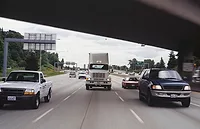US Motor Vehicle Deaths Dropped 2% in 2019

For the second consecutive year, the U.S. experienced a small decline in roadway deaths, according to preliminary estimates from the National Safety Council.
In 2019, an estimated 38,800 people lost their lives to car crashes – a 2% decline from 2018 (39,404 deaths) and a 4% decline from 2017 (40,231 deaths). About 4.4 million people were injured seriously enough to require medical attention in crashes last year – also a 2% decrease over 2018 figures.
At the state level, fatalities are estimated to have dropped more than 13% since 2018 in seven states – Alaska (-16%), Connecticut (-14%), District of Columbia (-21%), Nevada (-14%), New Hampshire (-30%), South Dakota (-21%) and Vermont (-31%). Six states experienced estimated increases in fatalities by more than 5% - Delaware (20%), Maine (35%), Nebraska (8%), Ohio (8%), Tennessee (10%) and Wyoming (32%).
Research to definitively determine why fatalities have decreased for the last two years is likely to lag several years, said the NSC. "However, the NSC preliminary estimate signals that the country may be experiencing the benefits of several risk mitigation actions implemented in the last few years. For example, 10 cities have embraced Vision Zero models, which make streets safer by taking actions that include redesigning high-crash areas to reduce crash risk. Other proven measures include lowering the legal alcohol concentration limit. Utah’s implementation of a .05 legal limit has prompted other states to consider similar laws. Coalitions such as Road to Zero have raised the national dialogue," it said.
Even more, said the NSC, "the majority of newly manufactured vehicles include advanced driver assistance systems, such as automatic emergency braking, lane departure warning systems, backup cameras and adaptive headlights, all of which are proven to reduce the severity of crashes or prevent them altogether."
“Thirty-eight thousand deaths is still unacceptable, even if it is fewer than in years past,” said Lorraine M. Martin, NSC president and CEO. “We are encouraged by the actions so many organizations are taking to reduce deaths, and we applaud legislation that curtails common crash causes such as impairment, distraction and speed. But as a nation, we still need to demonstrate better commitment to saving lives. Roadway deaths can be prevented by doubling down on what works, embracing technology advancements and creating a culture of safer driving.”
NSC noted that 2018 final data show continued spikes in deaths among pedestrians, while distraction continues to be involved in 8% of crashes, and drowsy driving in an additional 2%.
Looking for a reprint of this article?
From high-res PDFs to custom plaques, order your copy today!





